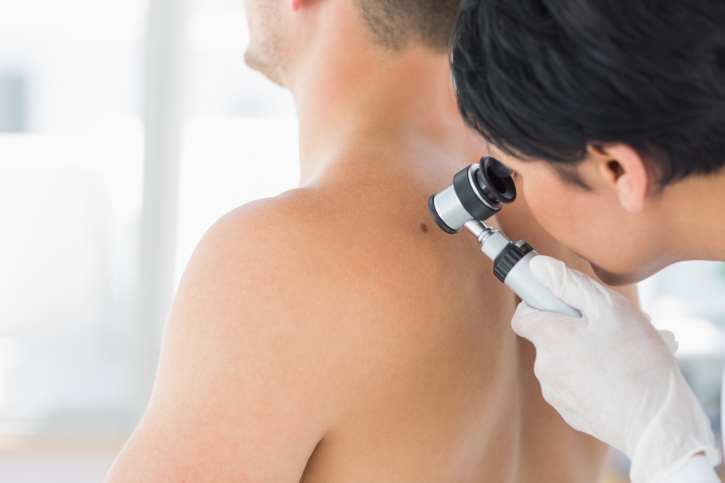
Watch out for you freckles and moles (nevus).
Seek medical advice about any anomaly in the moles on your body. It is important.
Early detection of anomalies in moles and blemishes on the skin is very important as early treatment is definitely the best way to prevent a greater evil.
Any change in the shape, thickness, aspect and size of the moles is an early warning of melanoma, the most aggressive of skin cancers.
At this time of the year, special care must be taken when exposing your nevus or moles to the sun. Keep an eye on them and use a very high factor sunscreen.
This is how you keep an eye on a mole:
- Check to see if it has increased in size. Unlike a wart or a blemish caused by the sun, a common mole does not grow and has a stable size of at most 6mm. However, if the increase in size is evident in a few months, see your doctor.
- You should also check the edges. Moles have clearly defined edges. If the edges are irregular, ragged or uneven, it is not a common mole.
- The colour. Moles are a uniform black, cinnamon or coffee colour. They should not be discoloured, or pink, white, red or bluish in appearance.
- Check to see if the mole is getting thicker, has scale or is getting rough, or even oozes or bleeds. The surface of the moles should not change unless they are infected or torn due to an injury.
- Symmetrical. Moles are symmetrical, which means that if cut in two, the two sides are equal.
- Moles do not change in a short period of time unless they are infected. This is why you should keep an eye on them to make sure they have not changed in appearance.
Other types of skin lesions or blemishes which do not evolve naturally sometimes appear and these too must be checked and monitored. For example:
- An injury that fails to heal. It may simply be a skin lesion that has become infected and takes longer than normal to heal, or the start of a wart, which at first you do not notice. However, as a rule, chafing, a wound, cut or a pimple heal in under 10 days.
- A blemish that clearly spreads and changes in size.
- A lack of pigmentation that evolves and grows, is itchy or discharges.
- A lesion or blemish that is painful to touch.
If in any doubt, seek your doctor’s advice. He or she will decide if it is advisable for you to see a dermatologist. It is better to be safe than sorry.
Remember to use moisturiser on your skin, avoid alcohol and products that are hard on the skin, and, above all, use the proper sun protection factors during the hours when sunlight is strongest, and cover any worrisome blemishes and moles to prevent them burning.
